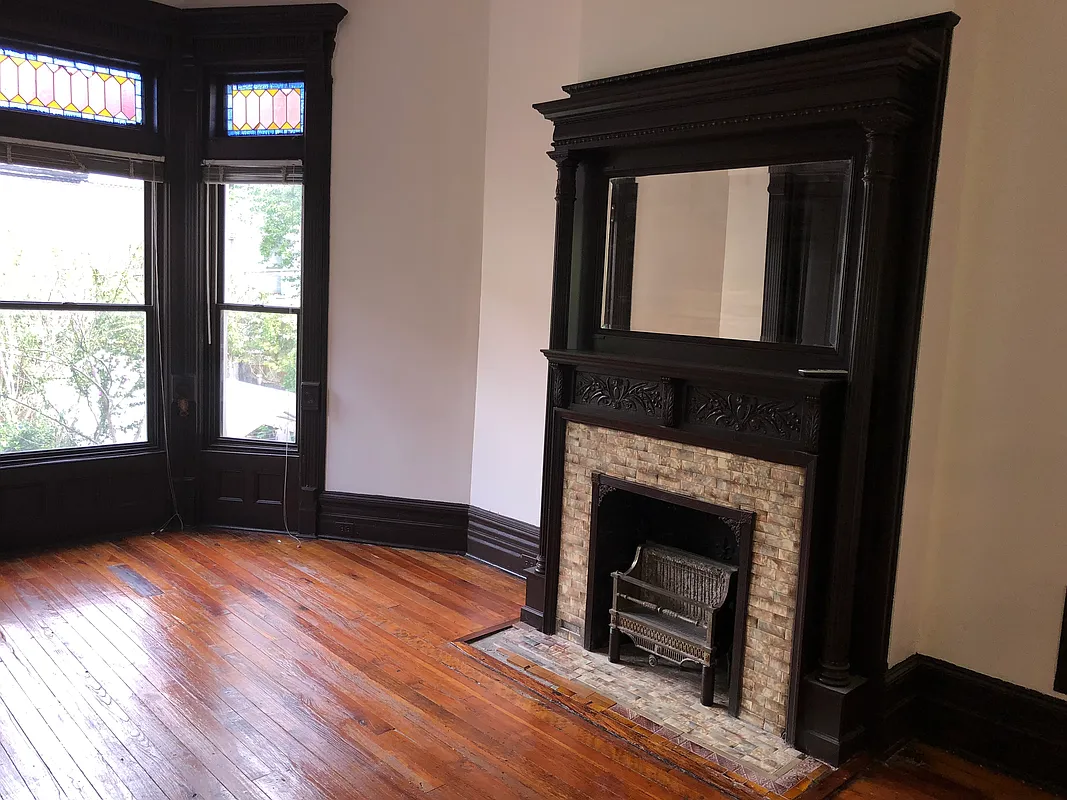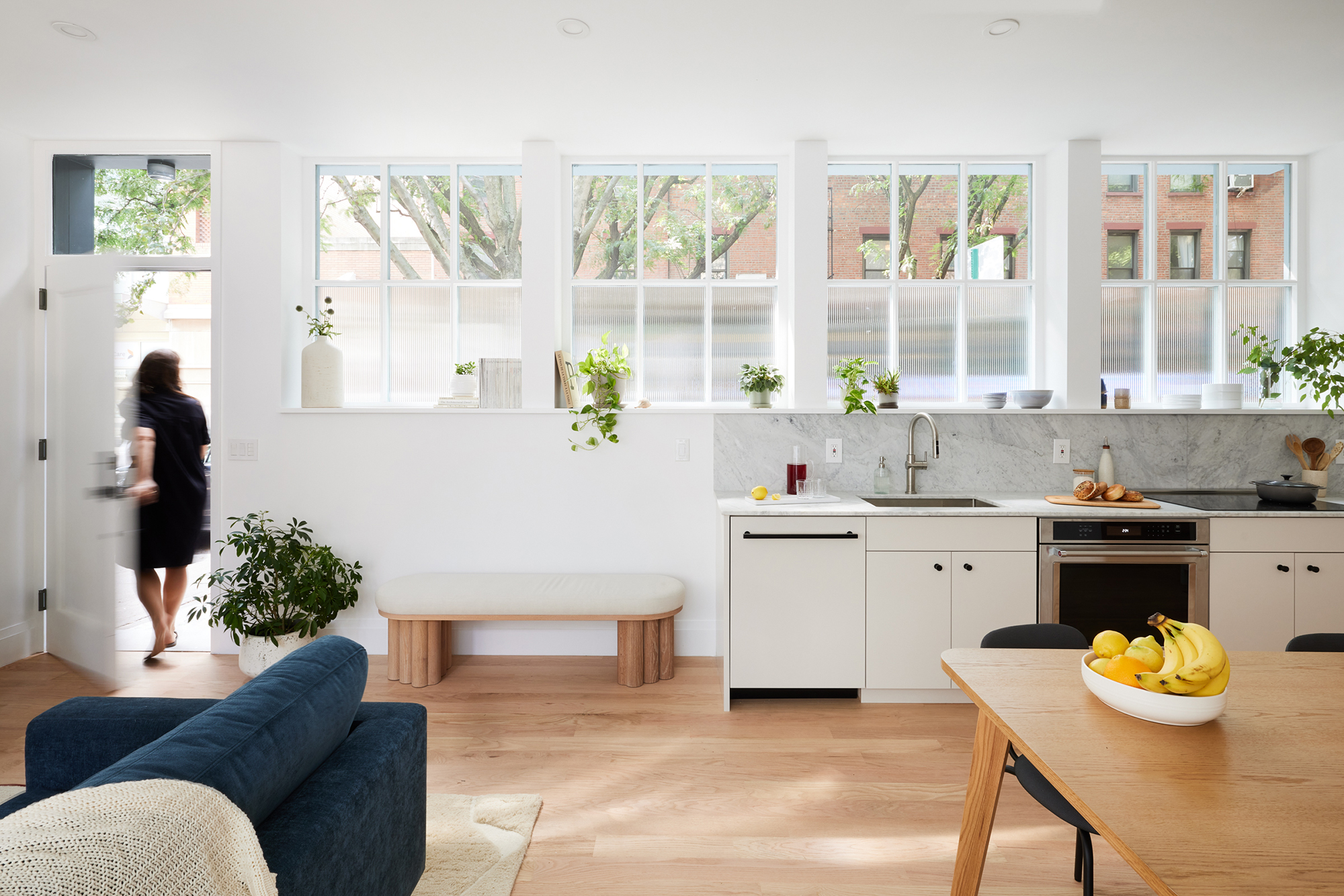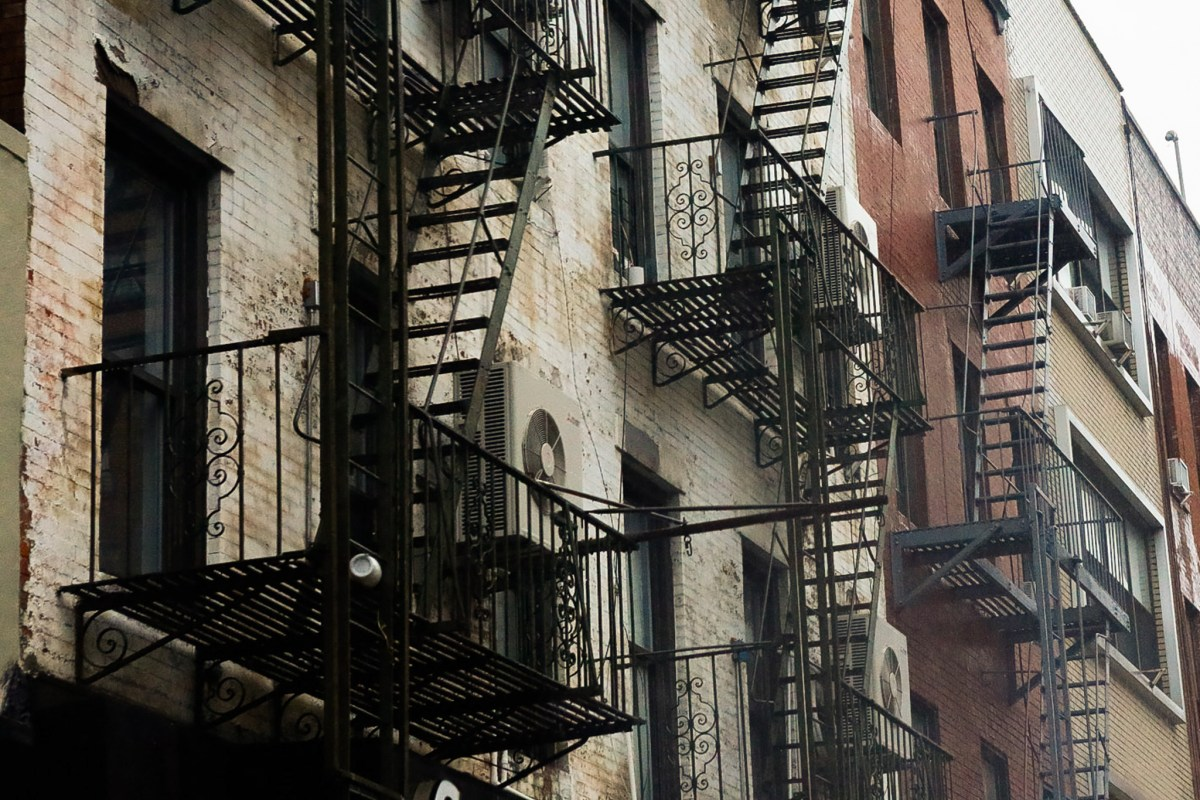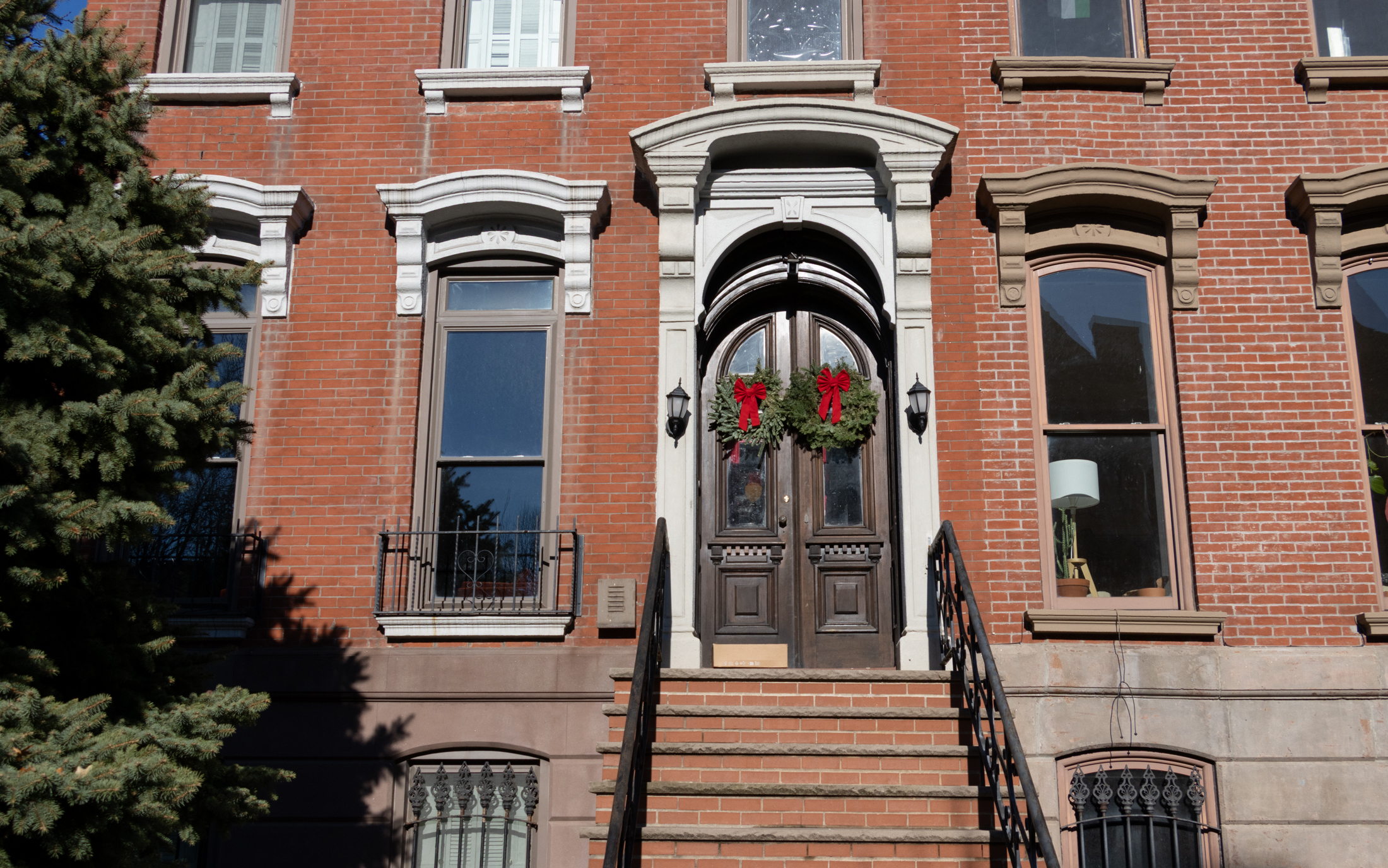New Bed-Stuy More Like Old Bed-Stuy?
Bedford Stuyvesant was the childhood home of both Billy Joel Norman Mailer and Lena Horne, reports Globe St., and it’s posed to become such an artistically, economically and racially diverse neighborhood again. “In recent years, Bed-Stuy’s population has begun rebounding and the demographic mix of that population has been diversifying. Those with a historical bent…


Bedford Stuyvesant was the childhood home of both Billy Joel Norman Mailer and Lena Horne, reports Globe St., and it’s posed to become such an artistically, economically and racially diverse neighborhood again. “In recent years, Bed-Stuy’s population has begun rebounding and the demographic mix of that population has been diversifying. Those with a historical bent might point out that the demographics are returning to the kind of diversity seen here in former years.” Of course, some of that is code for white people moving in, and as we know from yesterday’s discussion of the reversal of what demographers call “white flight,” that doesn’t necessarily mean a neighorhood’s on the upswing. Here’s what they report it has going for it: Last year, the Bed-Stuy Gateway Business Improvement District was formed; most of the area still qualifies for the 421-a tax abatement program, despite changes to it in July; and they’ve seen an influx of retail — Home Depot, Applebee’s and a consumer banking center are cited. Wait, aren’t we the borough of Mom and Pop shops?
A Tree Grows in Bed-Stuy [Globe St]
Brooklyn Brownstones. Photo by sfcityscape.





Polemicist, I think you are operating on some very dubious premises here. First of all, it always amuses me that that calls for the ending of racial “claims†to a neighborhood only arise when other people want that neighborhood back. I don’t see anyone clamoring for the end of identity politics in Brownsville, or Borough Park, or Brighton Beach, for that matter.
Secondly, the Fulton Street was not abandoned by the black community. There are very few empty storefronts between Franklin and Kingston Avenues. Are most of them great stores? I don’t think very many would think so, but they serve a need for parts of the community, or they would be gone. The abandonment came when the historical shops of a middle class, integrated community jumped ship in the 60’s and 70’s. When I moved to BS in ’83, we still had a viable Woolworth’s, complete with lunch counter here, between Bedford and Nostrand. That left when the entire chain dissolved. Most of the stores here now are owned by Middle Eastern, and some African businessmen from many countries, most of whom don’t live here anywhere near here, who hire very few employees not family members. The rents on Fulton are quite high for what you get, too. Black entrepreneurial spirit cannot be measured solely by Fulton Street. I personally don’t care who owns a store. I want quality merchandise at a fair price, in a clean setting, and I want to be treated with respect, not as a suspect. If I don’t get that, I won’t shop there. Many of my friends and neighbors feel the same way. Fulton St, including downtown, needs a lot of work. That is a topic in itself.
Your third point – huh? Yeah, many black homeowners have benefited by the interest in BS. Most of the landlords for all of the young white kids I see in the subway are black, too. So what? If you don’t want to play identity politics, then that goes without saying. Before those kids moved in, we were still landlords, making money. I believe I do represent most of the black community on this. Are you mad? We are interested in as much of the community rising with the high tide of prosperity for altruistic racial reasons, as well as practical economic reasons – less unemployment and crime, better services, schools and stores are just as beneficial to our well being as to newcomers. Come on, that’s common sense.
How can you say there’s been little development? If by development, you only mean high rise buildings, then yes, thank goodness. But there is certainly room for that, in certain places, but all development should be tempered with some thought and care for the surroundings. You can house a great many people without going up 20 stories. You can sustain and create neighborhoods, not just dwellings, and certainly not just crap that will only be torn down in 20 years.
Glad you fixed that Billy Joel mistake. –A former Long Island teen who was very excited when Cold Spring Harbor was released.
Now back to the main discussion…
Bedford Stuyvesant was a 100% white neighborhood from until the late 1930s when some blacks started moving in from the south and WI. By the 1950 it was 50/50 and in the 1960 and early 70s you still had some old white families in the area. Spike Lee shows us that in Crooklyn set int he mid 1970s. In 80s and 90s it was hard to find a white person. Today on the Nostrand Ave A train platform it was about 40/60 the area is going back to the feel of the 1950s when it comes to diversity and I really think it needed. This will help us learn from one another and appreciate each other.
Montrose, there are a couple of points I think need to be said in response to your post.
1) The main thrust of the article is the shift in demographics – i.e. the neighborhood is returning to how it was for most of the 20th century, a diverse place not necessarily dominated by one racial group. Personally, I think this is a good thing. Now more than ever, divisive identity politics need to be cast aside and racial claims to neighborhoods have to end.
2)It’s funny you mention Fulton Street, because I’ve always felt that has demonstrated how even the black community has abandoned their neighborhood. Where did entrepreneurial, wealthy and middle class blacks set up retail shops? Not in Bed Stuy – they chose Downtown Brooklyn due to the safety and proximity of so many legal apparatuses.
3) There are literally thousands of black homeowners and apartment house landlords who have received an instant increase in wealth. Blacks have benefited the most, by far, from the rise of Bed Stuy. I believe your view is not representative of the entirety, or even the majority, of the black population of the neighborhood.
4) The entire neighborhood, except near Atlantic Avenue, is already zoned for low density development. That said, there has been VERY little development in the neighborhood. We agree on the low quality of housing, and I think by now you know my explanation for such low quality. But this is a city-wide issue that really hasn’t affected Bed Stuy all that much. Most of the new development of which I am aware is low-income housing, particularly by the Housing Partnership. So, at the very least – it isn’t crap being sold for $1.5MM like that atrocity in Greenwood Heights.
Yes MM. I was cringing at that part of the article that talks about developers coming in to snap up lots. And do what? Put up fedders buildings? That shit has to stop one way or another.
Also Judge Judy, Jackie Gleason and Carl Sagan…among the older crowd. Look up Bedford Stuyvesant in Wikepedia and it gives a whole list of natives.
What bothers me about this “new excitement†and articles like this one, is the total disregard for what is here now, and who is here now, and how all this rush to the gold fields of Bed Stuy will actually pan out to the greater good of the community. The article makes it sound as if they just discovered a new continent, and must sail over here and plant their flags before someone beats them to it, or worse, the natives wake up.
Don’t get me wrong, I want to see an improved business district as much as the next resident. I’d like to see some substantial changes in the way businesses in general treat this community, specifically banks, large real estate firms, and other large businesses that do business here, reap profit, and take that profit back to wherever, and do very little for the community. They aren’t England, and we aren’t one of the colonies.
No where, not even ONCE in the article, did anyone mention the people of Bed Stuy, other than to mention the influx of new, whiter people. Hello – the neighborhood is not empty. There are people here doing well, always have. They are usually never mentioned, like we don’t exist. There are also huge social problems here, and no rush to build or open new stores is going to succeed as planned until some of these problems are addressed. They will not be addressed by 200 new cashier jobs. I’m not talking about handouts, either. I’m talking about taking the unique situation that is Bed Stuy, with its varying incomes, educational levels, housing situations, etc, etc, and crafting a plan so that this rising tide lifts more boats than just the yachts.
Lastly, any grand talk of rushing in to build, build, build needs to be tempered by some serious planning. This rush to throw something with a roof on vacant and underdeveloped lots has resulted in the Fulton Street Horror building, and blocks and blocks of fugly and poorly built housing that will not stand the test of time. The very thing that attracts people to BS, its architecture, tree lined streets and low density blocks will be ruined by crap. Some kind of urban planning board needs to be instituted, and it needs to have teeth to prevent the mess that has frankly, ruined parts of BS already.
oops, you’re right. mailer it is.
I think Bed stuy is a Great buy for a Young Family or those into the Arts. For $700k you can get a Beautiful Home. I see this area increasing in value over the next 7 years.